

RelativeDating. Education.nationalgeographic. Sediment is solid material that is moved and deposited in a new location.
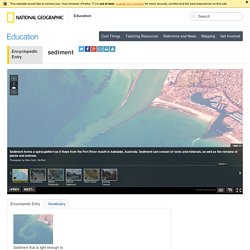
Sediment can consist of rocks and minerals, as well as the remains of plants and animals. It can be as small as a grain of sand or as large as a boulder. Sediment moves from one place to another through the process of erosion. Erosion is the removal and transportation of rock or soil. Erosion can move sediment through water, ice, or wind. Water can wash sediment, such as gravel or pebbles, down from a creek, into a river, and eventually to that river's delta. Glaciers can freeze sediment and then deposit it elsewhere as the ice carves its way through the landscape or melts. Wind can move dirt across a plain in dust storms or sandstorms. Sediment is important because it often enriches the soil with nutrients. For thousands of years, the Nile River flooded yearly and brought with it 4 million metric tons (4.4 million short tons) of nutrient-rich sediment. Sedimentary Rock Sandstone forms as sand hardens.
The Clock Of Eras One way to Visualize Geologic Time. The Clock of Eras is a graphic aid to help us visualize geologic time.
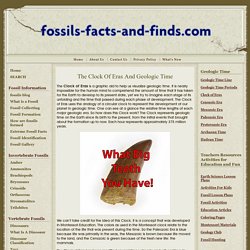
It is nearly impossible for the human mind to comprehend the amount of time that it has taken for the Earth to develop to its present state, yet we try to imagine each stage of its unfolding and the time that passed during each phase of development. Understanding-Geologic-Time-6-8.pdf. Earth Floor: Geologic Time.
Relative Geologic Time and the Geologic Time Scale. Bret Bennington Hofstra University Author Profile This activity has benefited from input from faculty educators beyond the author through a review and suggestion process.
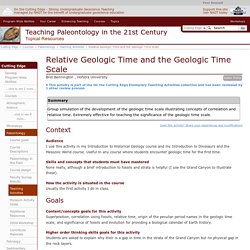
This review took place as a part of a faculty professional development workshop where groups of faculty reviewed each others' activities and offered feedback and ideas for improvements. To learn more about the process On the Cutting Edge uses for activity review, see This activity was selected for the On the Cutting Edge Exemplary Teaching Collection Resources in this top level collection a) must have scored Exemplary or Very Good in all five review categories, and must also rate as “Exemplary” in at least three of the five categories. Scientific Accuracy Alignment of Learning Goals, Activities, and Assessments Pedagogic Effectiveness Robustness (usability and dependability of all components) Completeness of the ActivitySheet web page For more information about the peer review process itself, please see Summary Context Audience. Roping Geologic Time. Randall M Richardson University of Arizona, Department of Geosciences Author Profile Summary After having talked about the geologic time scale, I ask for two volunteers from the class to hold a rope that is 50 feet long.
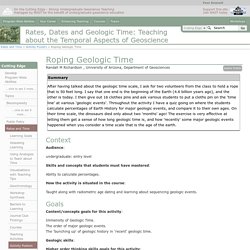
Annenberg Learner Express. Radiometric Dating of a Rock Run Time: 00:04:30 Scientist Britt Argow talks with teacher Joe Reilly about how scientists can determine the approximate age of a rock: comparing the relative abundance of naturally-occurring radioactive elements to their decay products.
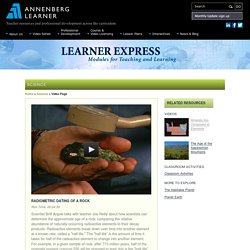
Radioactive elements break down over time into another element at a known rate, called a "half-life. " The "half-life" is the amount of time it takes for half of the radioactive element to change into another element. Absolute dating rock layers. Welcome We have found this cliff and collected samples from the layers of sedimentary rocks.
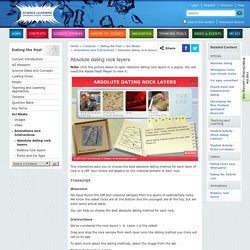
We know the oldest rocks are at the bottom and the youngest are at the top, but we want some actual dates. You can help us choose the best absolute dating method for each rock. Instructions We’ve numbered the rock layers 1–6. Big Questions. Educational Services - WOSU Public Media. Earth Science - Earth Science. Evolution in New York State's Physical Setting/Earth Science Core Curriculum Key Idea 1: The Earth and celestial phenomena can be described by principles of relative motion and perspective.
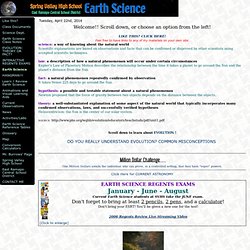
People have observed the stars for thousands of years, using them to find direction, note the passage of time, and to express their values and traditions. As our technology has progressed, so has understanding of celestial objects and events. Theories of the universe have developed over many centuries. Earth & Space Science. Essential Science for Teachers Exploring topics that range from soil to the solar system, Essential Science for Teachers: Earth and Space Science provides participants the opportunity to increase their science content knowledge and develop new understandings of how this content connects to K - 6 classrooms.
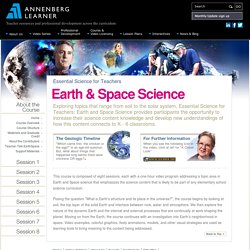
The Geologic Timeline "Which came first, the chicken or the egg? " Evolution. Evolution: Videos for Students: Evolving Ideas. Classroom Resources. In this three-part lesson, students learn about natural selection, the mechanism that drives evolution.
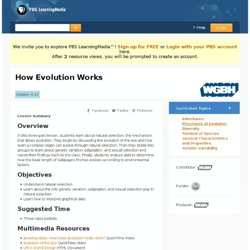
They begin by discussing the evolution of the eye and how even a complex organ can evolve through natural selection. Then they divide into groups to learn about genetic variation, adaptation, and sexual selection and report their findings back to the class. Explorations Through Time. Teaching Geological Time Eras To Students With Help From This Video. Geologic Time. 1.
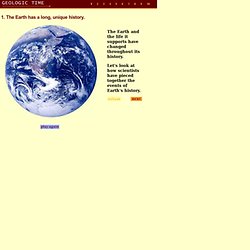
The Earth has a long, unique history. The Earth and the life it supports have changed throughout its history.
Understanding Geologic Time.